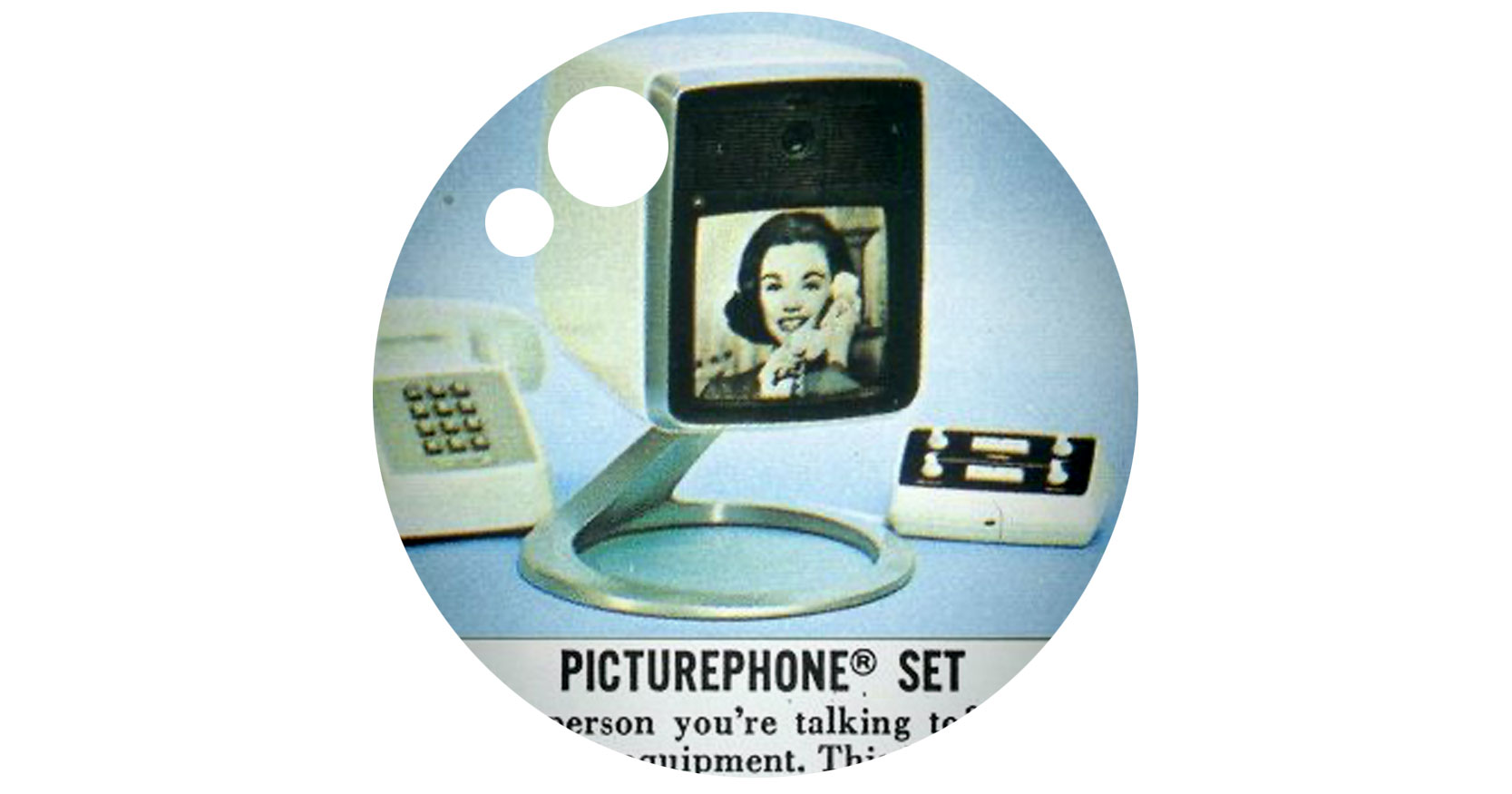
Three Fundamentals in Timing, Value, and Embracing Failure
Zoom, Hangouts, Teams, Skype, FaceTime… pick your poison. How about Picturephone? You’ve probably never heard of it, but it’s impacting you every day.
Over the last year, we’ve all become intimately acquainted with life on video – even our parents and grandparents are getting in on the action. This new way of communicating has woven itself quickly into our daily lives – but in reality, is video conferencing all that new? Not a chance. It’s been around for a LONG time, and here are three lessons we can learn from its evolution…
Let’s start by going backward. In 1956, AT&T began work on “Picturephone” prototypes that used analog telephone networks to send still images every two seconds. At the 1964 World’s Fair in New York City, attendees placed some of the first video calls using the Picturephone exhibit to Disneyland in California. Video conferencing was born.
Later that year, public Picturephone locations were installed in New York, Washington D.C., and Chicago. They required a reservation and cost $16 for a three-minute call. People were curious, but Picturephone never caught on, and by 1968 all the locations had closed. In 1970, AT&T tried to bring the technology into homes and offices, and again, it was a failure. It wasn’t until 2001 that the first live satellite broadcast was delivered from Afghanistan in the Gulf War. Then, almost fifty years after those Picturephone prototypes, the first public version of Skype launched in 2003.
What can we learn from all this?
First, timing is everything. Great ideas need to be timed correctly. In 1956, the world wasn’t ready for video conferencing. It was exciting and fun to play with, but there wasn’t a compelling need driving people toward it. Fast-forward to this past year, when stay-at-home orders and isolation created that need, and we adopted videoconferencing in what seemed like an instant. From our first-graders to our grannies, everyone got on board. When the timing is right, the path to success is much smoother.
Second, communicating your value proposition is critical. Those initial video conferencing platforms like Picturephone were viewed with curiosity but never adopted. Why? The value of seeing someone on a screen while you talked to them, versus just talking to them on the phone, wasn’t clear. There were barriers, from having to make a reservation to the great expense, and the value of video didn’t translate. Now, look at video conferencing today. As connecting with one another became more challenging, the value almost communicated itself.
Here’s the final lesson… what looks like a failure isn’t always a failure. Those engineers who created Picturephone technology fifty-plus years ago probably saw their efforts as somewhat of a flop. Yes, it was cutting-edge for the time, but with little to no adoption of what they created, the term “failure” was probably tossed around. As they say, hindsight is 20/20. Seeing Picturephone today as the launchpad for video conferencing as we now know it, it’s easier to see the success those 1950’s engineers created. Their “failures” were building blocks – the foundation to something we’re all using today.
Woven through all of this is a lesson in resilience. Video conferencing as we know it today was created piece by piece on a series of stops and starts, hits and misses. Each relative failure would have been an opportunity to stop building on the technology, but instead, people kept toying with the idea and innovating around the concept. In 2020, when we needed it most, it was ready because of the work that started back in 1956.
Call-to-Action
From how we look at timing to how we communicate value and define our failures, there’s a lot to learn from Picturephone and the video conferencing origin story. The next time you Zoom, Hangout, FaceTime, Skype, or jump on Teams, remember to take these lessons with you, appreciate how we got here, and apply some of this to your own story.
Ready for more?
OrangeBall Insights has always been a place to share ideas, explore our purpose and leadership, and chat a little bit about marketing. If this resonated and you’d like to receive weekly ways to bounce higher every day, subscribe here.



